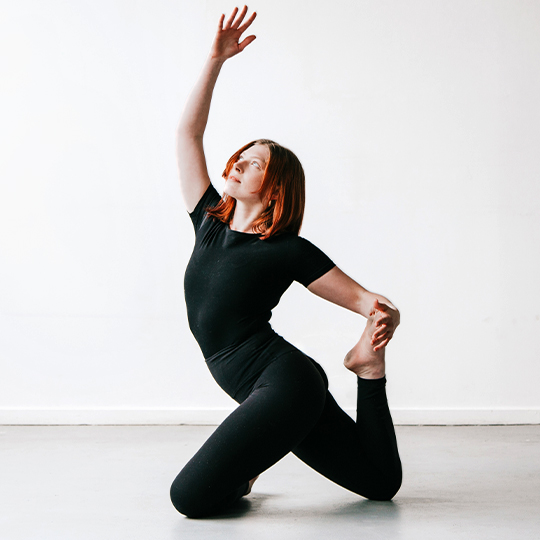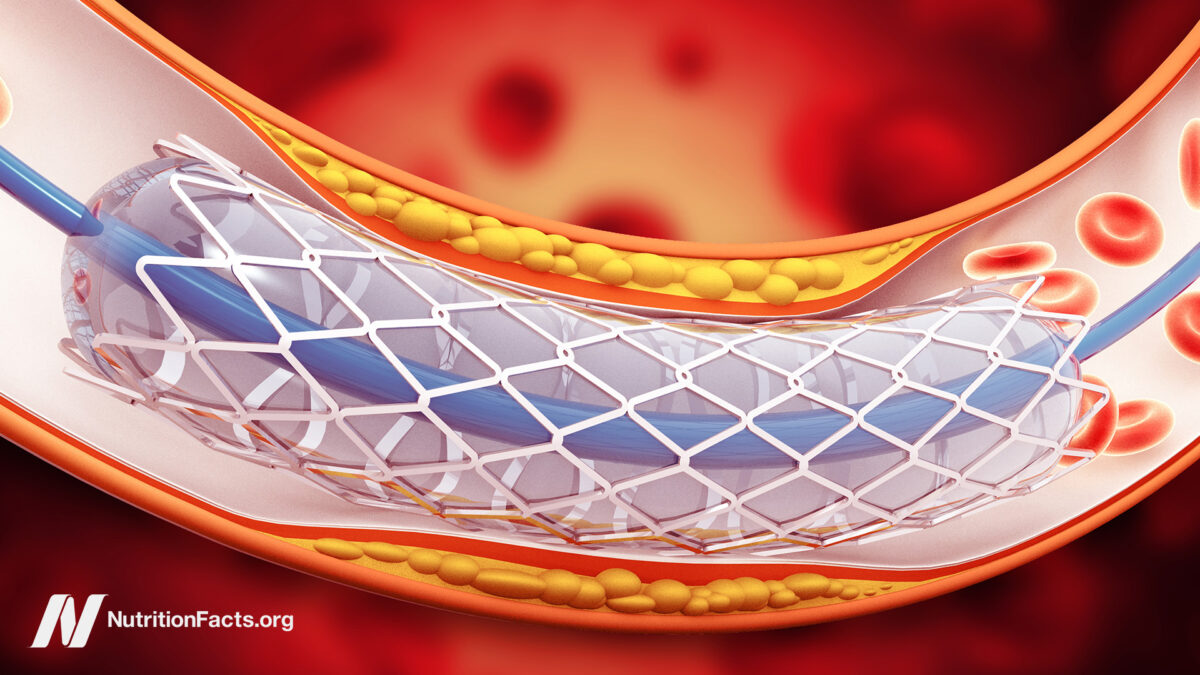Our Beauty Director Tried A $2.7K At-Home Laser For 3+ Months: Her Thoughts
Is it worth the hefty price?


mbg Beauty Director
mbg Beauty Director
Alexandra Engler is the beauty director at mindbodygreen and host of the beauty podcast Clean Beauty School. Previously, she's held beauty roles at Harper's Bazaar, Marie Claire, SELF, and Cosmopolitan; her byline has appeared in Esquire, Sports Illustrated, and Allure.com.
August 27, 2023 Our editors have independently chosen the products listed on this page. If you purchase something mentioned in this article, we may The beauty industry is not short of buzzy gadgets that capture the zeitgeist. It seems like every year my social media feed is flooded with the new It Tool that promises you the world. As a beauty editor, I get the opportunity to try most of these tools. (Lucky me!) But there was one that hit the market recently that captured the beauty industry’s attention. A first of its kind skin care device that made even me giddy: The Lyma Laser, the world’s first FDA-cleared at-home skin care laser. It's an investment. And I mean that in every sense: Not only is it costly, it’s time intensive. So it’s only natural you’d want to know as much as possible about it before making a purchase. 
Advertisement
This ad is displayed using third party content and we do not control its accessibility features.
So I spent three months researching the technology, using it on myself daily, and chatting with professionals about their thoughts—just so I can relay it to you here. What is the LYMA Laser & how does it work?
The Lyma Laser is the world-first FDA-cleared at-home tool that utilizes laser technology. At the risk of sounding pedantic, I do think it’s important to explain what a laser actually is. Lasers use a single beam of light. Laser technology is the use of light to stimulate tissue (such as skin, cartilage, or hair) regeneration.
There are many kinds of lasers that have unique intended uses—so lasers shouldn’t be thought of as a monolith.
Some lasers target the surface of the skin (called ablative). These will induce controlled thermal damage in order to stimulate a wound response in the skin. This will lead to increased collagen, cell renewal, and other benefits (which are specific to the laser in use.) Common examples are Fraxel and CO2.
These are exclusively in-office lasers that resurface the top layers of the skin, while stimulating thermal damage in the dermis as well. These are highly effective, but require downtime and robust pre- and post-care.
Other lasers bypass the top layer of the skin so no surface level damage is inflicted (called non-ablative.) The energy is isolated in the lower layers of skin, where it stimulates collagen and adenosine triphosphate (ATP) production.
These can be both in-office (IPL, for example) and at home (LED masks). These don’t have downtime, but aren’t as immediately effective.
The Lyma Laser is considered non-ablative and uses Low-Level Light Therapy (LLLT) technology. LLLT technology uses photobiomodulation, or using light to stimulate rejuvenation rather than inducing thermal damage. Because it’s not relying on heat, these are often nicknamed “cold lasers.”
This not only makes it safe for at-home use, but means there’s no downtime, peeling, or adverse effects that are associated with the more intense options. But it also means it’s not as immediately effective, and results only come with cumulative use. However, as far as at-home tools go, this is considered to be the most effective option available.
Summary:
The LYMA laser uses Low-Level Light Therapy (LLLT) technology. LLLT technology relies on photobiomodulation, or using light to stimulate cell rejuvenation, increased collagen production, and optimize ATP in the body (which supports cellular energy).
Advertisement
This ad is displayed using third party content and we do not control its accessibility features.
LYMA Laser Basics
| Cost | $2695 for 1x starter kit |
| Technology | Low-Level Light Therapy (LLLT) technology |
| FDA-registered | Yes |
| Wavelength | 808-nanometer laser |
| Power | 100 x more powerful than LED |
| Warranty | 2 years & guaranteed global repair |
| Product lifespan | 10 years |
| Usage | 30 mins daily for 3 months |
Good for:
Advertisement
This ad is displayed using third party content and we do not control its accessibility features.
Areas to use the Lyma laser:
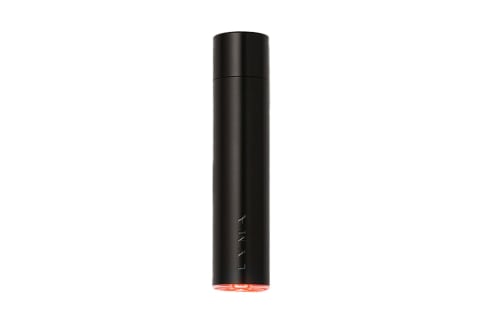
LYMA Laser skin benefits
The LYMA Laser targets skin concerns associated with aging. It can be used as both a treatment (i.e. rejuvenate and reverse skin issues) and a preventative tool (i.e. keep issues from forming in the first place.)
“The LYMA increases elasticity and tackles issues from fine lines to hyperpigmentation. While you see the best results with consistent use after three months, I also see an immediate response from clients who have more mild inflammation and flare ups,” says celebrity esthetician Joanna Czech, who uses the laser in her practice and on herself. “I was immediately interested in the LYMA laser when I learned that it both stimulates ATP energy and turns on cellular regeneration. This technology gives you age-defying results.”
The laser works by stimulating ATP production. ATP is a molecule naturally found in the body that acts as your body’s energy currency and supports mitochondrial function. With age, ATP production declines, and with it our cellular function is diminished—including reduced collagen production, slower cell renewal, and less ability to fight inflammation in the body.
Essentially, without ATP production the aging process begins. So if you’re able to improve ATP production, you can help stop and reverse signs of aging.
Here are the primary benefits that folks can expect:
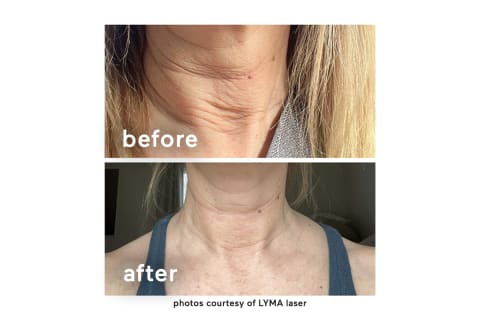
Image by mbg Creative / courtesy of LYMA laser
Advertisement
This ad is displayed using third party content and we do not control its accessibility features.
How to use the LYMA Laser
The only way you’re going to see results from the LYMA Laser is if you use it regularly as instructed. This is true of all skin care (consistency is key!), but especially tools.
Now, this is where I’m going to lose some folks. The usage protocol is time-intensive.
To experience full face results they recommend at least 30 minutes everyday for three months, notes Sara Cooke, skin specialist at LYMA laser. For isolated areas (such as a dark spot or stubborn wrinkle), the laser should be used for at least three minutes over the treatment zone every day until you’re happy with the results.
After that, folks are encouraged to stick to using the laser a few times a week (3-4) as maintenance.
The full face glide protocol:
Advertisement
This ad is displayed using third party content and we do not control its accessibility features.
The spot treatment protocol:
For best results do the full face and spot treatment method in conjunction with each other. This may mean you do the full protocol for more than 30 minutes a day. The spot treatment protocol is ideal for trickier areas, such as around the eyes, stubborn dark spots, forehead, and lips.
The treatment protocols usually take about three months, as I noted above. However this is a general guideline. Users can move into the maintenance phase once they feel happy with their results, which can be shorter or longer than the three month mark. Ultimately, it’s up to the user.
My personal experience & results using the LYMA Laser
I didn’t want to like the LYMA Laser. I didn’t want to be the sort of editor who recommends a tool that’s in the thousands. I didn’t don’t think the average person should spend hours thinking about their skin. I’m low-maintenance! I keep my routine chill! I don’t think more expensive is always better! I think there are many things more valuable than younger looking skin!
But the truth is that the LYMA Laser is good—really good. I feel lucky to have it.
Usage
For the past three months, I have used the LYMA laser almost every day. There were exceptions here and there (the long weekend to celebrate a friend’s bachelorette and a few nights when I got home too late to commit to a session), but for the most part—I was diligent. I wanted to give the laser a real shot.
Cooke explained that the official protocol is 15 minutes each side, doing the routine I described above—but she also told me that I could really make my own routine.
Most nights I split it into thirds, rather than halves. The routine was as follows: 10 minutes on my forehead, and 10 minutes on each cheek and lower half of the face.
When I had more time to spare, I’d spot treat around the eyes, paying special attention to the crows feet area and my dark circles. Then if I really wanted to go all-in, I’d give some extra love to the marionette lines forming around my mouth.
The sensation itself feels like nothing. I thought for sure I’d feel a subtle warming or even a tingle at the least, but it’s the most benign experience imaginable. The most “painful” part of the entire ordeal is having to hold the thing up to your skin for 30 minutes a day.
Speaking of: This is not a hands-free device, so multitasking can be a challenge. I tried doing it while working (failed, as I can’t type with one hand), cooking (failed once I realized I needed to chop something), and reading (much easier, but still kind of annoying when you need to turn the page). So I used it as an excuse to watch some TV or listen to a podcast (notice my headphones are in the below photo).
But I will say that once I got into the habit of it, it wasn’t that difficult to fit it in. Now when I sit on the sofa and turn on my favorite show, I grab it almost instinctively. It’s found a semi-permanent place on my coffee table for ease.
As diligent as I was, I must admit that I did skip some days here-and-there. But Cooke assured me that it wasn’t setting me back too far: “Skipping a day doesn't undo all of your hard work. But using it consistently and daily—just as with any kind skincare product or device—is really crucial in order to see the best result.”
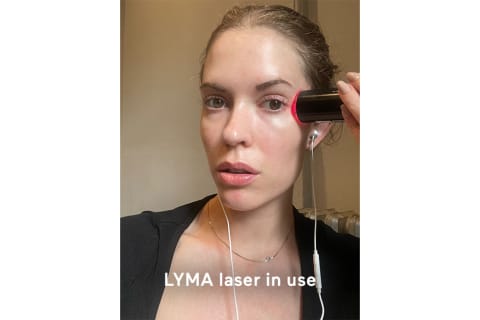
Image by mbg Creative / Alexandra Engler
Results
As I noted I’ve been using this almost daily for the last three months, which is the standard length of time they tell you that you’ll see results.
The most immediate and noticeable result was reduction in redness. My skin gets flushed easily, thanks to sensitivity and mild rosacea. In the last three months these flare-ups have become so infrequent that I can’t remember the last time I was bothered by the hue of my cheeks.
Often I’ll preemptively wear a tinted moisturizer just because I never know what might trigger my skin to turn pink. But now I’m far more comfortable leaving the house sans cover-up because I don’t live in fear of a flare-up. It sounds like a small thing, but as anyone with rosacea will know—this benefit is life changing.
Next I noticed the horizontal fine lines on my forehead and crinkles around my eyes disappeared. For the last several years I’ve been in a constant back-and-forth with these areas trying to make the dainty etches stay dainty. And at my age, the normal topicals aren’t as effective as they once were. This has smoothed out the wrinkles considerably, especially on my forehead.
The last thing I noticed was only recently—and that was from comparing my before, during, and after photos. There’s a phenomenon called perception drift, which happens when your appearance changes slowly over time. It’s much harder for your brain to pick up on improvements since they happen so subtly, so we’re not as able to notice how dramatic the results actually are.
So when I looked at my photos side-by-side, I couldn’t believe how soft my texture looked. I don’t think my texture was ever too rough to begin with, but in my most recent (make up and filter free) photos, it was so dewy and smooth.
I’m not the only one who is impressed by their results with the laser. “I recommend the LYMA Laser to all of my clients. This tool is one of a kind and I have never seen results like ones from the LYMA Laser. It is worth every penny, in my opinion,” says Czech.
As someone whose job is skin care, I consider the time commitment just part of the gig. But I can understand why people’s initial reaction is shock. And what I’ll say to people who can’t fathom sticking to a 30-plus minute session every day, this isn’t for you. If you’re not going to stick with it, it’s certainly not worth the money.
But if you are eager and willing to commit to it—and you have the budget—it’s the most effective piece of technology I’ve ever experienced.
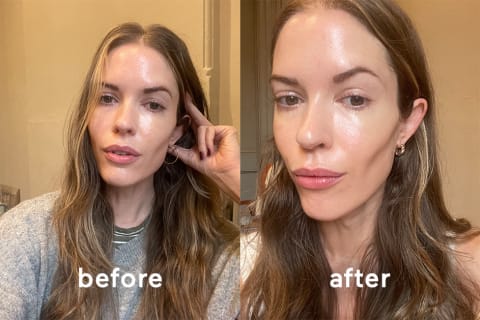
Image by mbg Creative / Alexandra Engler
What skin care should you use with it?
I used a wide range of skin care products with it, given I had tested it over the course of three months—which included plenty of travel.
As I noted earlier in the usage section, it should be used on clean skin (no makeup or SPF), alongside topical products to help it glide. I used it just after my traditional skin care routine, be that morning or night, and always layered on a lightweight facial oil to help the tool glide over the skin.
Typically I use a gentle cleanser, followed by some sort of serum (such as an antioxidant serum), a face cream (here are my go-tos), and then a facial oil.
LYMA has skin care, which I often paired with the tool, but I also used other brands given I needed to test out other products for other reporting. (Again: three months is a long time to be working on a story!) The LYMA Skincare Serum and Cream work with the laser for best results, however.
The formulas work by targeting eight mechanisms of aging, which “helps turn back the epigenetic shift in skin cells” which will then help improve skin cell turnover, boost circulation, ease inflammation, smooth wrinkles, and fade dark spots.
The verdict:
The LYMA laser is the most advanced piece of technology I’ve ever used, and I can see why scores of editors, experts, and celebrities fawn over it. It delivers on the results promised: My rosacea has significantly subsided, my fine lines have smoothed, uneven texture has disappeared, and my overall complexion looks refreshed.
Eventually I made a habit of using the laser that felt second nature, but can imagine for those who might be apprehensive about committing to 30 minutes daily—using it may seem like a big ask. That’s entirely up to your tolerance for skin care tools. I think the benefits far outweigh the time commitment—especially since I ended up using it during times in which I was just relaxing regardless.
Of course, the price will be a major hindrance to lots of folks. There’s certainly an argument to be made that investing in this will save you the pricey trips to a facialist or in-office treatments: Considering the wand is said to work for up to 10 years, you’ll more than get your money’s worth if you use it consistently. But it’s a hefty one-time purchase that lots of folks (myself included!) would have a hard time justifying. The truth is, I got the wand as I work in the beauty industry, and not sure if I could have afforded it otherwise.
But since I do have it, all I can say is that it’s incredibly impressive. It’s worth its pretty price tag.

At-home LYMA laser vs. In-office professional lasers
If doing a laser at home sounds intimidating—like you may burn your face off—rest assured that this tool is not the same as going to get a laser in a dermatologist’s office.
In-office lasers (such as Fraxel and CO2) are usually ablative, that target the surface of the skin. As I’ve noted above, these work by inducing a controlled wound response to resurface the skin and stimulate collagen production. These are highly effective and almost immediate, but require downtime and robust pre- and post-care.
The LYMA laser, on the other hand, does not stimulate a wound response. Rather it uses photobiomodulation to improve collagen at ATP. Because there’s no superficial wound, there’s no need for downtime. However, it does take longer to see the effects.
“Clinic grade lasers have to be used by a dermatologist or trained professional as they use heat to create damage to trigger the regeneration process. The LYMA laser uses the body’s own biological processes to stimulate rejuvenation,” says Cooke. “Whilst the LYMA laser technology is strong, it does take consistent daily use for a minimum of 12 weeks before you see results in your skin. Whereas with more invasive treatments with downtime, you can bring about results a bit quicker.”
LYMA laser vs. LED masks or tools
There’s a natural comparison to the other most common at-home tool: LED lights. In fact, that was the first question I asked Cooke when I hopped on a video chat with her: So what’s the difference and why is the LYMA supposedly so much stronger?
Both LED and the LYMA Laser both harness the power of photobiomodulation, so there is some overlap. However, why the laser is so much more effective than LED devices is thanks to how deep the light is able to penetrate.
“The lens of the LYMA dispenses the laser beam 25,000 times—so it dispenses it into 25,000 little lasers basically, which are coherent light that are able to penetrate a lot deeper into the skin,” explains Cooke. “It doesn’t lose its power when it hits the surface, like LED. The wavelengths in LED are quite large, so when they hit our epidermis it disperses, scatters, and bounces off the skin. While it’s able to make superficial changes, in terms of actually working on a cellular or structural level it’s not as effective.”
FAQ
Why are some LYMA lasers red and some blue?
According to the brand, regional regulation differences account for why some of the lasers have a blue tip versus a red tip. “However both use the same game changing technology: Near-infrared invisible Low Level Laser Light,” the brand notes.
What are the side effects of LYMA Laser?
The LYMA laser is safe for at-home use with no common adverse reactions reported. The brand does advise that if you have an overactive thyroid disorder to not place the laser directly over the thyroid for an extended period of time—you can pass over it, but you shouldn’t hold it static over the area. If you have questions or concerns about your specific skin type or health matter, please consult with your health care practitioner who can work with you to decide if it’s safe for use.
What is the LYMA Laser good for?
The LYMA laser improves ATP production, boosts collagen and elastin, encourages wound healing, and supports circulation. It offers a wide range of benefits, including reduced skin sensitivity, smoothed fine lines, faded dark spots, evened complexion, and overall glow. It’s ideal for those who are looking to address signs of aging.
The takeaway
Coming in at a baseline of $2,695, this tool is no small purchase. It’s also a major time investment, given you need to use it at least 30 minutes daily for three months (before tapering off to a more reasonable “maintenance” schedule). However, given the unique technology that’s able to actually inspire changes at the cellular level, it makes sense that it has a higher price tag. Using low-level light therapy, this is an astounding 100 times more effective than LED masks at improving the appearance of the skin. Its benefits include improving the appearance of fine lines, fading dark spots, clearing up blemishes, and easing redness—among other long-term skin benefits.
As someone who has used it (almost) daily for three months, I can vouch for its power: It completely eliminated my forehead wrinkles, reduced my rosacea-induced flushing considerably, and dramatically improved my overall texture. While I understand that it’s very cost prohibitive for many, if you can afford it, I consider it a very worthwhile investment.

 Lynk
Lynk 










